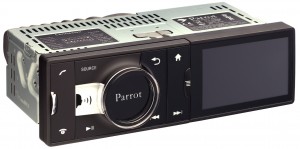My background, going back many, many years, is that of a software developer. That probably came about because of my insatiable desire to investigate the latest in technology, and today I still enjoy a frighteningly strong curiosity for all that is new within the science and technology realms.
As a software developer, I’ve often been involved very close to the bleeding edge of emerging technologies, and I can recall attending a conference in San Jose in the late ’90s, where the focus of that conference was software development for the then very new Microsoft Windows CE platform. That was the forerunner for the Windows Mobile platform as well as the recently released Windows Phone 7 platform and devices, but within Windows CE, there was a variety of devices and hardware targets being addressed, one of which was a Windows CE device that would take the form factor of a car radio.
We are talking about a car radio with PDA facilities – address and phone book capabilities, for instance, as well as, perhaps a built-in mobile phone. A couple of these devices actually did make it to market, but they were expensive and quite rare. I don’t believe that any were put into the market place here in Australia.
Let’s now bring ourselves into the present day: the year is 2011, and the French manufacturer, Parrot, has just announced pricing and availability for their new Asteroid car radio.
With the Asteroid, Parrot are bringing into the market place a car radio, based upon Google’s Android operating system. The unit shown to me is a single DIN form factor, which means that it will fit easily into the car radio receptacle of most cars released here over the last 20 years or so, and a dual-DIN form factor is currently under development, so I am led to believe.
But what is this device, and what can an Android based car radio bring to your driving experiences?
If go back to what I saw in San Jose, this is, in some ways, a manifestation of what Microsoft tried to bring to the market 13 or so years ago. But with the advances in hardware and software that have been achieved over those years, we seem to have a device that is quite mature and compelling in its feature set and implementation.
First of all, it’s a car radio, just as you have now, with a 220W MOSFET amplifier to boot. It also has a detachable face plate for security, and like many other modern car radios, it can accept a USB stick with your music on it, and play music directly from that USB stick.

But with Android driving the system, it also offers a whole lot more: it can attach to your mobile phone, read the address book, and then act as a voice powered phone dialer. In these days where hands free phone dialing is the only legal way to go, this is a must have feature. And this time – based upon the very brief testing I did – it seems to actually work too. A couple of names I regularly call routinely present problems to voice dialers, but the Asteroid handled the problem names with ease. I’ll be interested to see how well this performs under the challenges that a convertible car, with the roof down, presents.
As you may know, many Android devices offer mapping and GPS functionality. While there is no, as yet, turn by turn GPS navigation, GPS mapping is offered, and the GPS antennae can be mounted remotely to the actual radio unit.
The Asteroid also comes with an internet radio “tuner” installed. Of course, it’s not really a tuner in the way that the AM or FM radio tuner works, but this will permit you to listen to your favourite internet radio stations, streaming from the world wide web, while you’re driving around. What this means is that if you have a favourite radio station in, say, New Orleans, or Los Angeles, or London, or Paris, and if that station happens to stream its broadcast feed onto the internet, as most of them do these days, then you should be able to listen to station, coming off your car radio, while you’re driving around, and on the other side of the world.
Other apps are installed and many more are planned, and of course, being Android, there will be many available through the Android Market.

The Asteroid offers a number of external connections, including line in, a couple of USB ports, and an SD card slot. It comes with a number of cables, including a iPhone compatible cable, which makes this an Android device that supports native iPhone compatibility. I suspect that that may be a first.
But while the cables are good, I’m a little disappointed that there’s not a set of front panel connections for these facilities as well. The current design seems to mean that you may have to accept a couple of cables being stowed within, for instance, your car’s centre console. Not wholly unacceptable, but hardly an elegant option either. Even a small panel that you could perhaps install somewhere on the car’s dashboard, with the connectors pre-mounted onto that panel, might be a nicer, more elegant way of doing this.
And perhaps this issue may also be addressed when the dual-DIN slot unit comes to the market, as there will be far more front panel real estate for Parrot’s designers to play with.
Parrot advise that the Asteroid should be available in stores in late October 2011, for a suggested price of about $399. For now, this looks to be a very interesting – exciting even – device, and it’s one that I, given my background and exposure to this sort of technology, am anxious to be getting my hands on once it becomes available.
